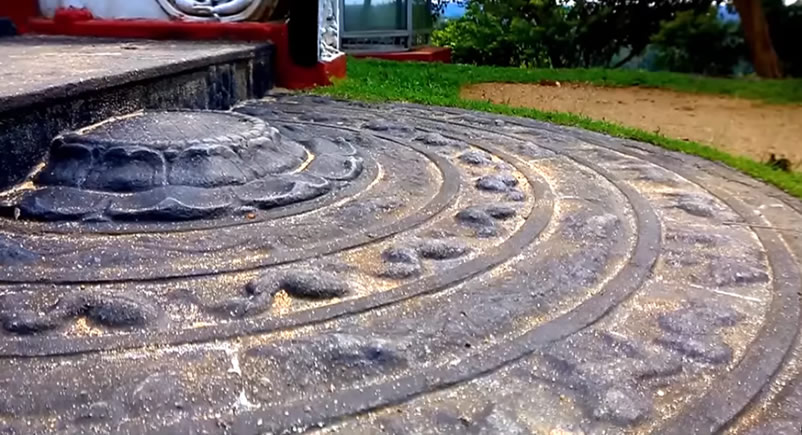Moonstones and Guard Stones of Sri Lanka
Visiting historical monuments is part of most Sri Lanka trips. Usually, the tourist visits a large number of important tourist attractions in the historical cities such as Anuradhapura and Polonnaruwa.
Moonstones and guard stones are being considered as some of the most important sculptures among the classical Sinhalese sculptures. Some of them rated among the world’s best artistic achievements.
These are mainly to be found in Buddhist temples and they are considered to be elements of religious importance. Travellers may encounter them in the Buddhist temples in archaeological sites such as Anuradhapura, Polonnaruwa, Dambulla etc, and they are made with distinct physical appearances and spiritual meaning.
Moonstone
As the name suggests moonstone is semi-circular gneiss of granite stone slab, located at the entrance of the shrines and the other important places in the Buddhist temple. Initially, it was a piece of the stone slab without any stone carving on the surface. With the evolution taken place, it has turned to a richly carved in concentric semi-circular bands with the polished surface during the Anuradhapura period. The art of moonstone was introduced from India and it was enriched by Sinhalese architects adding their own identity.
The moonstone depicts some aspects of life, with the different concentric bands, that need to be conquered in order to attain the ultimate spiritual goal. The outermost band of the moonstone shows the styled flames and symbolizes the desire. The next band shows a procession of animals and symbolizes the four sorrow of life.
Animals that are carved on to the surface and their representations are, the elephant symbolizes birth, the lion represents illness, the horse represents aging and the bull symbolizes the death.
This band of animal shows the endless cycle of rebirths or Samsara, the ultimate goal of Buddhists. The entangling life force is represented by the twisting creepers, the band carved inner ward of the animals. The purity is represented by the geese of the next band, and the lotus buds in the beaks symbolize the wisdom and discrimination.
The centre of the moonstone is occupied by the lotus flower, the sacred flower of Buddhists, symbolize the Nirvana. The lotus flower is given a prominent place in the Sinhala-Buddhist society and can be seen in the architecture, Sri Lanka arts and literature.
The moonstone symbolizes the essence of Buddhism and concentrates the mind of devotees who come across the moonstone. The best-preserved ancient Moonstone is located in the historical city of Anuradhapura. Several other moonstones with excellent craftsmanship are to be found in the national museum of Colombo and Kandy, Polonnaruwa historical city and Kandy tooth relic temple.
Guard stone
Guard stone is the protective emblems set up on either side of the moonstone. It considered as unique to Sinhalese art. Fully developed guard stone is embedded with a Naga (cobra) king in costumes similar to a prince. He holds a flower-filled pot on the palm of one hand and the blossom-laden branch on the other hand to symbolize the prosperity.
The seven-headed cobra appeared over the head of Naga king symbolize the defensive power of the guard stone. The two dwarfs carved on the lower part of the guard stone are believed to be the attendants of kuvera, God of wealth. They are identified as Padma (Lotus) and Shanka (Conch Shell), their costumes on the head imitate the forms of the lotus and the conch respectively.






